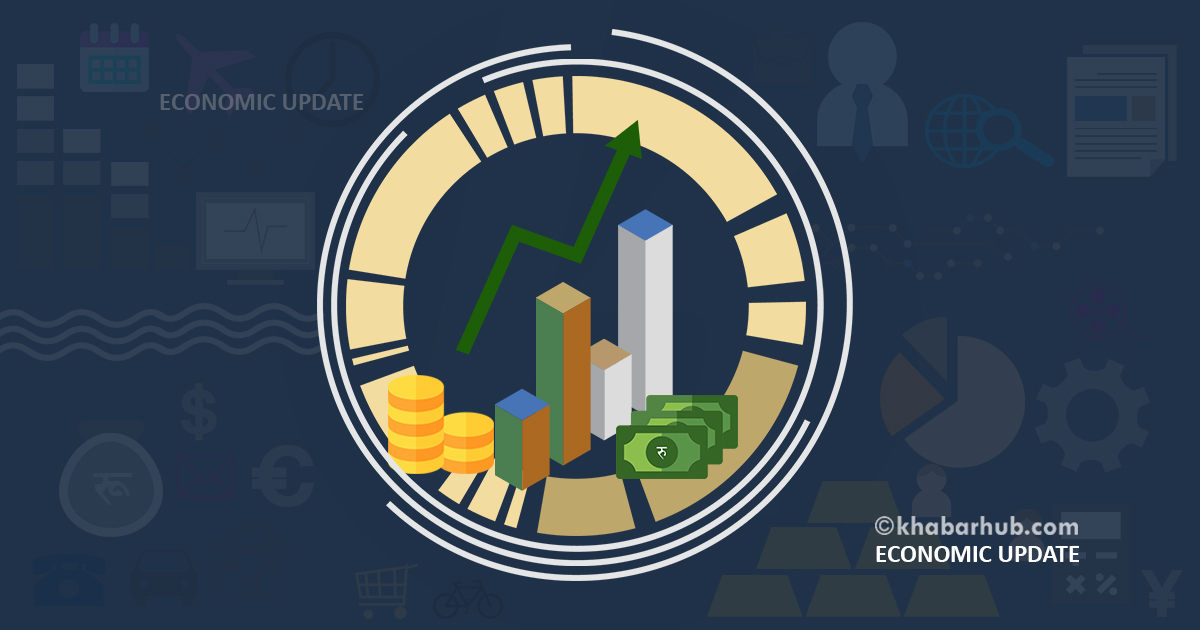Economic Digest: A Weekly Overview of Nepal’s Business Landscape
KATHMANDU – In the ever-evolving economic landscape of Nepal, the Economic Digest serves as a vital resource, offering concise yet comprehensive summaries of significant business happenings. This week, we delve into the latest trends and developments that are shaping the country’s economy, from stock market fluctuations to import and export dynamics.
NEPSE Experiences Continued Decline
The Nepal Stock Exchange (NEPSE) has been on a bearish trend for over a month, with last week witnessing a notable decline of 90 points. The market opened at 2,576.76 points on Sunday and closed at 2,486.76 points by Thursday. Throughout the week, the index fluctuated significantly, reaching a high of 2,643.51 points and a low of 2,443.28 points, resulting in a volatility of 200.23 points.
The week began with a glimmer of hope as the index increased by 11.58 points on Sunday. However, this positivity was short-lived, as the market faced sharp declines on Monday and Tuesday, with losses of 59.02 points and 58.93 points, respectively. A brief recovery on Wednesday saw a gain of 49.18 points, but this was followed by another drop of 32.81 points on Thursday. Overall, investors faced a staggering loss of Rs 143.10 billion during this tumultuous week.
Currency Exchange Rates Remain Stable
In the realm of currency exchange, the rates for foreign currencies, including the US dollar and Euro, remained unchanged from the previous Saturday. According to the Nepal Rastra Bank, the buying rate for one US dollar is Rs 133.63, while the selling rate stands at Rs 134.23. The Euro’s buying rate is maintained at Rs 149.14, with a selling rate of Rs 149.81. Other currencies, such as the pound and Australian dollar, also saw no changes, reflecting a period of stability in the foreign exchange market.
Surge in Smartphone Imports
In a notable development, Nepal’s smartphone imports surged to nearly Rs 7 billion in the first two months of the current fiscal year, with 454,958 units entering the market. This significant demand underscores the increasing importance of smartphones in everyday life, reflecting changing consumer behavior and a growing digital landscape. The rise in smartphone imports indicates a shift towards technology-driven lifestyles, as more individuals seek connectivity and access to information.
However, smartphones represent just one facet of Nepal’s broader import scenario. The country remains heavily reliant on imported petroleum products, with petrol imports valued at Rs 11.65 billion and diesel at Rs 13.64 billion. This heavy dependence on foreign energy sources highlights potential vulnerabilities, especially given the volatility of global oil prices. Additionally, LP gas imports, valued at Rs 9.42 billion, further emphasize the critical need for energy resources in the country.
Rising Vehicle Imports
The trend of increased vehicle imports is also noteworthy, with significant rises seen in motorcycles (valued at Rs 2.94 billion) and electric vehicles (Rs 2.43 billion). This surge suggests a growing middle class and urbanization, leading to increased demand for personal transportation. As more individuals seek mobility options, the automotive sector is poised for growth, reflecting broader economic trends.
Traditional Exports and the Need for Diversification
On the export front, Nepal continues to rely heavily on traditional goods such as carpets, tea, jute, and yarn. While these products have historically been strong performers, dependence on a limited range of exports poses risks if global market demands shift. The need for diversification in both import and export strategies is critical to bolster economic resilience and growth. By exploring new markets and products, Nepal can enhance its economic stability and reduce vulnerabilities associated with fluctuating global demands.
Conclusion
As we reflect on the significant business happenings in Nepal this week, it is evident that the economy is navigating a complex landscape marked by stock market volatility, stable currency exchange rates, and shifting import and export dynamics. The Economic Digest remains committed to providing timely and relevant insights into these developments, helping stakeholders make informed decisions in an ever-changing economic environment.
(Prepared by Srija Khanal)
